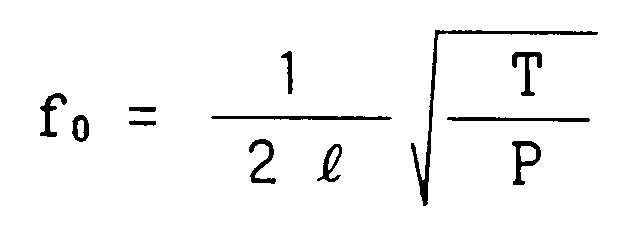How does the string affect the sound?
The behavior of a vibration of strings can be expressed by this equation:
Retrieved from https://www.google.com/patents/EP0593762A1?cl=en
f is frequency
l is length of the string
T is string tention
P is density of the string
l is length of the string
T is string tention
P is density of the string
The equation shows that frequency is inversely proportional to the string length. This means that if you want to increase the frequency, you can simply shorten the length of the string and vice versa. In order to shorten or extend the length of the string, you can easily move your finger along the fret of the guitar, which is exactly what frets are for. They allow you to increase and decrease the frequency of the sound, which means you can create whichever pitch you want.
In addition to the string length, string tension can also be adjusted by the tuners. If the tuner is tightened, tension in the string will be increased, which will then increase the frequency of the sound.
In addition to the string length, string tension can also be adjusted by the tuners. If the tuner is tightened, tension in the string will be increased, which will then increase the frequency of the sound.
